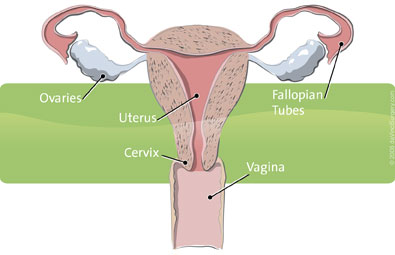Robotic Assisted Hysterectomy Surgery
 Hysterectomy is the surgical removal of the uterus. For most uterine conditions, if available non-surgical treatments fail to relieve symptoms, many women choose a more certain result with elective hysterectomy.
Hysterectomy is the surgical removal of the uterus. For most uterine conditions, if available non-surgical treatments fail to relieve symptoms, many women choose a more certain result with elective hysterectomy.
There are various types of hysterectomy that are performed depending on the patient’s diagnosis:
- Supracervical hysterectomy – removal of the uterus
- Total hysterectomy – removal of the uterus and cervix
- Radical hysterectomy – removal of the uterus and cervix; may also include removal of part of the vagina, fallopian tubes, ovaries and lymph nodes
Approaches to Hysterectomy
Surgeons perform the majority of hysterectomies using an “open” approach, which requires a 6- to12-inch incision.
Open Surgery
When cancer is involved, the conventional treatment has always been open surgery using a large abdominal incision, in order to see and, if necessary, remove related structures like the cervix or the ovaries.
Vaginal Hysterectomy
A second approach to hysterectomy, vaginal hysterectomy, involves removal of the uterus through the vagina, without any external incision or subsequent scarring. Surgeons most often use this minimally invasive approach if the patient’s condition is benign (non-cancerous), when the uterus is normal size and the condition is limited to the uterus.
With vaginal hysterectomy, surgeons are challenged by a small working space and lack of view to the pelvic organs. Additional conditions can make the vaginal approach difficult, including when the patient has:
- A narrow pubic arch (area between the hip bones where they come together)
- Thick adhesions due to prior pelvic surgery, such as C-section
- Severe endometriosis
- Non-localized cancer (cancer outside the uterus) requiring more extensive tissue removal, including lymph nodes
Laparoscopic Hysterectomy
In laparoscopic hysterectomies, the uterus is removed either vaginally or through small incisions made in the abdomen. The surgeon can see the target anatomy on a standard 2D video monitor thanks to a miniaturized camera, inserted into the abdomen through the small incisions.
A laparoscopic approach offers surgeons better visualization of affected structures than either vaginal or abdominal hysterectomy alone. However, surgeons may be limited in their dexterity and by 2D visualization, potentially reducing the surgeon's precision and control when compared with traditional abdominal surgery.
Robotic-Assisted Hysterectomy: A Less Invasive and More Effective Option
 Robotic-assisted hysterectomy offers numerous potential benefits over traditional approaches to vaginal, laparoscopic or open abdominal hysterectomy.
Robotic-assisted hysterectomy offers numerous potential benefits over traditional approaches to vaginal, laparoscopic or open abdominal hysterectomy.
Benefits of Robotic-Assisted Hysterectomy
When performed robotically with the da Vinci Surgical System, hysterectomy is done with unparalleled precision and control through a few small incisions along the abdomen. It offers numerous potential benefits over other surgical methods, including:
- Significantly less pain
- Less blood loss
- Fewer complications
- Less scarring
- A shorter hospital stay
- A faster return to normal daily activities
In addition, robotic hysterectomy also allows the surgeon better visualization of anatomy, which is especially critical when working around delicate and confined structures like the bladder. This means that surgeons have a distinct advantage when performing a complex, radical hysterectomy involving adhesions from prior pelvic surgery or non-localized cancer, or an abdominal hysterectomy.
As with any surgery, these benefits cannot be guaranteed, as surgery is both patient- and procedure-specific. While robotic-assisted myomectomy is considered safe and effective, it may not be appropriate for every individual. Always ask your doctor about all treatment options, as well as their risks and benefits.
Illustrations courtesy of Intuitive Surgical, Inc.